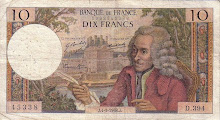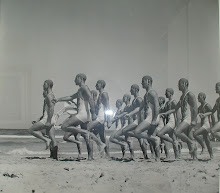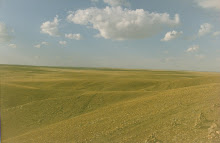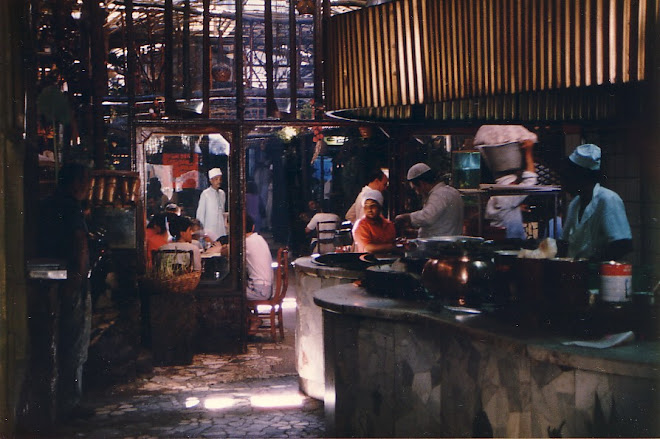Looking for Luisa Tetrazzini (1871-1940)

I think this post began when I was looking over some very early variable speed 78 records I found in a junk shop. They were made at the very dawn of audio recording history by the Gramophone Company in London and produced in Hanover.
They are one-sided, very thick, and etched with an angel on the reverse ...

The labels on the front were gold printed and colour coded for the artist involved, so mauve for Nellie Melba ...

... green for Enrico Caruso ...

... and pink (though it looks mauve here) for Luisa Tetrazzini ...

These records appeared in the first years of the twentieth century and cost one guinea each - a not insubstantial sum at the time.
Because a reasonable amount is generally known about Melba and Caruso, I began to look for whatever was on the net about Tetrazzini, particularly in terms of film and audio recordings.
The singer made her operatic debut in 1890 as Inez in Meyerbeer's 'L'Africaine', in Florence, the city of her birth.
Her early career was in Italy, with tours of Russia, Spain and South America. And in the lyric-coloratura repertory - for example, 'La Traviata', 'Rigoletto' and Lucia di Lammemoor.
In America, she initially experienced contractual difficulties which prevented her performing there. She left New York for San Francisco in 1905, famously saying 'I will sing in San Francisco if I have to sing there in the streets, for I know the streets of San Francisco are free'.

In 1907, Tetrazzini managed to appear for the first time at Covent Garden and create a sensation as Violetta in 'La Traviata' - Nellie Melba, her bitter rival and the reigning diva absoluta in London, was out touring in Australia and had left her 'territory' unguarded.
The plethora of vocal recordings of opera singers of this period bring them (somewhat) into the present in a way not possible for their predecessors.
And this was even more the case with the increasing volume of film being recorded.
And the two media together seem to give powerful suggestions of the effects of these artists on stage.
This first (silent) footage here shows the expressive liveliness and infectious vivacity of the singer and gives a sense of how she might present a light comic role.
Tetrazzini Broadcasting in London, 26 September 1921
The second segment shows the diva writing a letter of appreciation to the recording company with which she has just been working ...
... and reveals in close-up surprisingly elegant nail-polished fingers - which speaks to her personality in a way I wouldn't have imagined.


The next piece of film shows Tetrazzini saying goodbye to an 'Uncle Rex' (?) and then getting into a car ...
... and, while constructed as the leaving-taking the important person, shows her as warm, unselfconscious and smilingly full of fun.
This impression is consolidated in this film of her leaving Euston Station for a tour of the UK on 3rd October, 1932. And there is also something of a firm-ish no-nonsense approach to life seen here.
There is a record of Tetrazzini's wedding in Florence in 1926 to so-called toy-boy Pietro Vernati, who was twenty years her junior.

I'm still trying to track it down - and if anyone have any ideas ... .
The final and perhaps most interesting piece of footage (from 1932) has an audio track. Tetrazzini is seen listening to a record of her old colleague Enrico Caruso singing 'M'appari, Tutt'Amor' from 'Martha'. She then joins in and, while her voice is very much less than it is in earlier audio recordings, we have the opportunity towards the end of hearing her speaking voice. It is high-pitched and flutey and is complemented by her exuberant and infectious laughter.
Again there is a spontaneous warmth and uncomplicated enthusiasm which is seen particularly in her blowing a kiss towards the record player to her old friend.
Luisa Tetrazzini and Caruso sing 'M'appari, Tutt'Amor' from 'Martha' (1932)
Tetrazzini had an exceptionally strong vocal technique in terms of trills, staccati, runs and ornamentation in general. She had a very firm and undisguised control of the vocal line which produces a beautiful formalism, a characteristic for which Joan Sutherland has been much criticized. Tetrazzini also had, again like Sutherland, a powerful upper register with great clarion quality. I remember 'Our Joan' producing notes in 'Lucia' that seemed to leave the stage and float out into the auditorium, and hover in the air, ringing loud in your ears.
Probably good to finish with Tetrazzini singing at her best.
So a 1909 'Ah, non credea mirarti' from 'La Sonnambula' (Bellini) ...
... and a 1911 'Una voce poco fa' from 'The Barber of Seville' (Rossini) ...
Such a diva would probably like to have the last word - so here from the pages of 'Life' magazine, 1938 ...





I particularly like the obviously unexpected and slightly awkward moment when the telephone rings.
And the interruption after the official at-the-desk portrait.
When you move away from the constructed and polished atmosphere of the photographic session and gain a real insight into the sitter, here emotions that would not usually be revealed and recorded!













































![C18 Bronze Buddha [Southern China]](https://blogger.googleusercontent.com/img/b/R29vZ2xl/AVvXsEioLkgVKuhDoIHQgM1X6Oe2hGn75yqaj4OJXPmNpumXmQPKxB22S57YS5DVrl1P7zl7BS6EFpAtaNZPze7gzVCRiQI54bwdHhVa4fGr7NOChZwTZoo92gUen6tC5U8gWIy_pv92U0FB38M/s1600/Buddha+%255BBronze%252C+C18%252C+China%255D+1.jpg)













+1998+Cropped.jpg)










